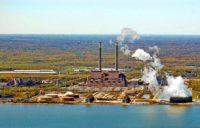More than $630 billion is needed simply to maintain existing wastewater, stormwater and other clean water infrastructure over the next two decades, according the U.S. Environmental Protection Agency’s latest Clean Watersheds Needs Survey, released to Congress May 13. The number represents a 73% increase over the amount cited in the previous survey in 2012, EPA says.
The survey is based on reports from states and U.S. territories on future capital costs or investment needed to maintain and modernize publicly owned wastewater treatment works, stormwater infrastructure, nonpoint source control and decentralized wastewater treatment systems such as septic tanks. “This survey is an important estimate of needs that is based on information collected from the communities themselves,” said Acting Assistant Administrator for Water Bruno Pigott in a statement.
Kristina Surfus, managing director of government affairs for the National Association of Clean Water Agencies (NACWA), says that the report underscores the enormous needs for robust federal funding for necessary upgrades and new projects. “The needs survey … is not even looking at the new costs that might be coming down the line; it’s looking at maintaining what we already have,” she says, noting that the number has increased by 73%, despite billions of dollars of investments clean water agencies—and their ratepayers—have made over the past decade.
The Biden administration has touted historic investment in water and wastewater infrastructure through the Infrastructure Investment and Jobs Act. Many observers say is providing a much-needed injection of funding for projects that have been postponed or stalled for years due to lack of resources, but they also characterize the funding available in the IIJA as a drop in the bucket compared to the amount actually needed.
The Value of Water Campaign—a coalition of water-sector utilities, consultants and associations that includes the U.S. Water Alliance, the Associated General Contractors and the American Society of Civil Engineers—released its own analysis the same day as the EPA report. It highlighted the need for continued and sustained investment over the coming decades.
The report concluded that continuing to invest in water and wastewater infrastructure at IIJA levels would reduce the current water investment gap by $125 billion over the next 20 years—enough to replace all lead service lines in the U.S., as well as repair or replace more than 25% of the nation’s two million aging water mains. Mami Hara, the U.S. Water Alliance’s CEO, says that the IIJA should be viewed “as a down-payment rather than a one-time infusion.”
Federal Spending Levels for Fiscal 2025
But, as federal appropriations hearings are beginning to ramp up on Capitol Hill, it’s unclear whether funding levels for the state revolving fund (SRF) and WIFIA loan programs will come anywhere close to what’s needed, notes NACWA’s Surfus.
While the request for EPA’s overall budget for fiscal 2025 is 20% higher than enacted for fiscal 2024, the amount requested for both the drinking water and clean water SRF programs for fiscal 2025 is well below the amounts authorized under the IIJA. Another wild card is the top-level limits on federal agencies required under the Fiscal Responsibility Act last year as part of the debt ceiling negotiations.
Christy Harowski, the Value of Water Campaign’s director, says that continuing to invest in water infrastructure at levels greater or equal to those in the IIJA is the “only viable option for a thriving economy and healthy communities 10 or 20 years down the road.”





